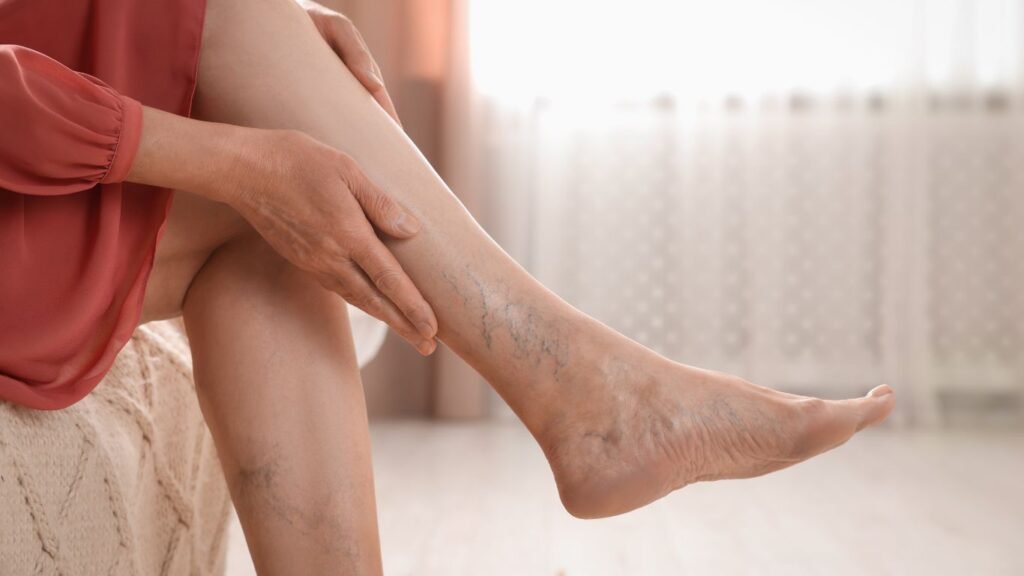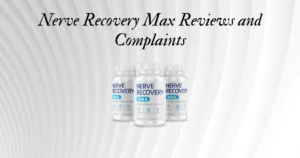Ointment For Varicose Veins: What You Need to Know
Varicose veins can be a bothersome issue for many people, leading to discomfort and concern about their appearance. Some individuals seek relief through various treatments, including ointments specifically formulated for varicose veins. Understanding how these ointments work, their ingredients, and their effectiveness can help you make informed decisions about your options.
Ointments for varicose veins typically contain active ingredients that aim to relieve symptoms and improve the appearance of veins. Here are some common ingredients found in these ointments:
- Horse Chestnut Extract: Known for its anti-inflammatory properties, this extract can help improve circulation and reduce swelling.
- Witch Hazel: This natural astringent helps tighten the skin, potentially reducing the appearance of varicose veins.
- Essential Oils: Oils like rosemary and lavender can promote circulation and provide a soothing effect.
- Vitamin K: Often used for its blood clotting abilities, vitamin K can help diminish dark spots caused by varicose veins.
When choosing an ointment, consider looking for products that blend these ingredients. The combination can maximize benefits and provide more comprehensive relief from the discomfort associated with varicose veins.
It’s also vital to note that while ointments can help manage symptoms, they aren’t a cure for varicose veins. Their effectiveness may vary depending on the severity of the condition and individual responses. Here are some benefits you may experience with the consistent use of ointments:
- Pain Relief: Many users report a reduction in aching sensations in their legs.
- Reduced Swelling: The anti-inflammatory properties can help decrease swelling and make your legs feel lighter.
- Improved Appearance: Regular application might lessen the visibility of varicose veins over time.
While these potential benefits are appealing, consulting with a healthcare professional before starting any treatment is crucial. They can help you determine if an ointment is suitable for your situation and whether you may need more extensive treatments such as compression therapy or surgical options.
| Study | Participants | Findings |
|---|---|---|
| Study 1 | 100 individuals | Participants reported a 40% reduction in swelling over 8 weeks using a horse chestnut extract ointment. |
| Study 2 | 75 individuals | Approximately 30% of participants noted improved appearance of veins after consistent use of a vitamin K cream for 6 weeks. |
Boost Your Vein Health Naturally
A healthy lifestyle can further enhance the effectiveness of ointments for managing varicose veins. Here are some tips to consider:
- Regular Exercise: A good routine can help improve blood circulation.
- Elevate Your Legs: Try to elevate your feet for short periods throughout the day to relieve pressure on your veins.
- A Healthy Diet: Incorporate foods rich in antioxidants which support vein health.
When applying ointment, remember to follow directions on the packaging for the best results. Use a gentle massaging motion to encourage blood flow. Consistency is key to achieving the best outcomes. Consider dedicating a few minutes each day to your routine of applying ointments combined with healthy habits for optimal management of varicose veins.
Ointments for varicose veins can be a helpful solution for symptom relief and improvement in vein appearance. Always consult a healthcare professional to determine the best approach for your specific situation and to discuss a comprehensive treatment strategy that works for you.
Common Ingredients in Varicose Vein Ointments and Their Benefits
Varicose veins can be more than just a cosmetic concern; they may lead to discomfort and more significant health issues. Many people turn to ointments as a natural means of alleviating the discomfort associated with these swollen veins. Understanding the common ingredients in varicose vein ointments and their benefits can help you make an informed choice. Here, we explore some of these key components that are frequently found in these therapeutic products.
Key Ingredients and Their Benefits
The effectiveness of ointments for varicose veins often lies in their active ingredients. Let’s delve into some of the most common substances used in these products:
- Horse Chestnut Extract: This is one of the most popular ingredients in varicose vein ointments. It helps improve blood circulation and reduces swelling. It also contains aescin, which tightens the blood vessels and reduces the permeability of capillaries, leading to less fluid leakage that causes swelling.
- Witch Hazel: Known for its anti-inflammatory properties, witch hazel can relieve itching and discomfort in the affected areas. It acts as a natural astringent, helping to tighten the skin and make veins less visible.
- Bioflavonoids: These are plant compounds that strengthen blood vessels. Ingredients like diosmin and hesperidin, found in citrus fruits, are bioflavonoids that help reduce swelling and improve circulation.
- Menthol: Renowned for its cooling sensation, menthol provides immediate relief from pain and discomfort. It enhances blood flow to the area and gives the skin a refreshing feeling.
- Cypress Oil: This essential oil is often used for its ability to circulate blood flow. Cypress oil can also help tighten the skin and reduce the appearance of varicose veins.
- Calendula: This natural herb promotes healing and reduction in inflammation. Calendula is widely recognized for its soothing properties, making it effective in alleviating discomfort associated with varicose veins.
- Arnica: Arnica is a well-known homeopathic remedy for bruising and swelling. It can help reduce pain and inflammation around varicose veins.
How Ingredients Work Together
The ingredients in varicose vein ointments often work synergistically to provide relief and improve the appearance of veins. For example, horse chestnut extract enhances circulation while witch hazel provides an astringent effect to tighten the skin. Together, these ingredients can significantly improve the overall condition of affected areas.
Possible Side Effects
While most ingredients in varicose vein ointments are safe, it’s essential to be aware of potential side effects:
- Skin Irritation: Some users may experience allergic reactions or irritation, particularly from essential oils. Always conduct a patch test before wider application.
- Interactions: If you’re taking medications, consult with a healthcare professional to ensure that the ointment’s ingredients do not interfere with your treatment.
- Pregnancy and Nursing: Certain ingredients may not be safe during pregnancy or while breastfeeding, so always check with a doctor first.
Choosing the Right Ointment
When selecting an ointment for varicose veins, consider the following:
- Check the ingredient list for the active components mentioned earlier.
- Look for products with a good reputation and positive reviews from users.
- Consult your healthcare provider to ensure the selected ointment aligns with your health needs.
An ointment into your daily regimen may complement other treatments for varicose veins, such as compression stockings or lifestyle changes. Combining these approaches can lead to improved results, providing better relief and preventing further complications.
Ultimately, understanding the common ingredients in ointments for varicose veins and their benefits empowers you to make the best choice for your health. Whether looking for relief from pain or improving the appearance of your legs, a well-formulated ointment can play an integral role in your care strategy.
Boost Your Vein Health Naturally
Lifestyle Changes to Complement Ointment Treatments for Varicose Veins
Managing varicose veins extends beyond using ointments; it’s essential to embrace lifestyle changes that support vein health. Varicose veins occur when veins swell, twist, or bulge due to poor circulation or valve problems. While ointments can provide relief and improve the appearance of varicose veins, certain lifestyle adjustments can significantly enhance their effectiveness. Here’s how you can complement your treatment to keep your veins healthy and relieve discomfort.
Maintain a Healthy Weight
Excess weight can put additional pressure on your veins, worsening varicose veins’ appearance and symptoms. Maintaining a healthy weight can help ease this pressure, improving overall circulation. Here are some tips:
- Eat a balanced diet rich in fruits, vegetables, whole grains, and lean proteins.
- Limit your intake of saturated fats, sugars, and processed foods.
- Stay hydrated; drinking plenty of water supports overall health.
Stay Physically Active
Regular exercise can strengthen your legs and improve blood circulation. Aim for at least 30 minutes of moderate activity on most days. Effective exercises include:
- Walking: A low-impact activity that strengthens your legs and promotes circulation.
- Cycling: Engaging in cycling helps improve blood flow while being gentle on your joints.
- Swimming: This is a low-impact way to exercise your whole body and is especially beneficial for those with joint pain.
Incorporate Leg Elevation Techniques
Elevating your legs can help reduce swelling and improve circulation. Try elevating your legs when resting by following these steps:
- Follow the “legs up the wall” position: Lie on your back and place your legs against a wall.
- Use pillows to elevate your legs when sitting or lying down.
- Aim to elevate your legs for 15–30 minutes daily for optimal results.
Fight the Phone Sedentary Lifestyle
Long periods of sitting can exacerbate varicose veins symptoms. Consider these practices to break up lengthy sitting sessions:
- Take short breaks every 30 minutes to stand up and walk around.
- Use a standing desk or adjust your workstation to alternate between sitting and standing.
- Perform simple leg exercises like ankle pumps or calf raises during breaks.
Wear Compression Stockings
Compression stockings create pressure on the legs, helping veins function more efficiently. If you want relief from varicose vein symptoms, wearing compression stockings can be beneficial:
- Choose the correct size and compression level, as recommended by a healthcare professional.
- Wear them during the day or as instructed, especially if prolonged periods of standing or sitting are common for you.
Limit Sodium Intake
A high-sodium diet can cause your body to retain water, worsening swelling in the legs. To reduce sodium intake:
- Read food labels and choose low-sodium options when available.
- Cook meals using fresh ingredients instead of relying on pre-packaged foods.
- Use herbs and spices to flavor meals instead of salt.
Stay Mindful of Footwear Choices
Wearing the right shoes can have a significant effect on your legs and vein health:
- Opt for comfortable, supportive footwear instead of high heels or tight shoes.
- Consider shoes with a low heel to promote better circulation.
- Avoid shoes that bind your feet, which can impede blood flow.
Keep Stress at Bay
Stress can lead to various health issues, including circulation problems. Implement relaxation techniques to help manage stress:
- Practice deep breathing exercises to calm your mind.
- Engage in mindfulness meditation or yoga.
- Set aside time for activities you enjoy to unwind.
Combining these lifestyle changes with treatment such as ointments for varicose veins can lead to improved vein health and comfort. Making conscious choices about your health will not only improve your overall well-being but also contribute to managing and preventing the worsening of varicose veins.
Natural Remedies: Are They a Viable Alternative to Varicose Vein Ointments?
Varicose veins can be more than just a cosmetic concern; they can cause discomfort and pain. Traditional ointments for varicose veins often provide relief by promoting better circulation, reducing inflammation, and soothing discomfort. However, many people explore natural remedies as alternatives or adjuncts to these commercial products. Are these remedies effective? Let’s delve into what options are available and how they compare.
Boost Your Vein Health Naturally
Understanding Varicose Veins
Varicose veins occur when the veins become enlarged, twisted, or overfilled with blood. They typically appear blue or dark purple and are usually found in the legs. While they are often harmless, they can lead to complications if untreated. Symptoms may include:
- Pain, especially after standing or sitting for long periods
- Swelling in the legs and ankles
- Skin changes, including discoloration
- Itching around the veins
Popular Natural Remedies
Many people turn to nature for solutions, believing that certain herbs and practices can alleviate the discomfort associated with varicose veins. Here are some popular natural remedies:
- Horse Chestnut: This well-known herb contains aescin, which is believed to strengthen vein walls and improve circulation.
- Grapeseed Extract: Rich in antioxidants, grapeseed extract may help reduce swelling and protect blood vessels.
- Witch Hazel: Applied topically, witch hazel may reduce inflammation and ease pain due to its astringent properties.
- Apple Cider Vinegar: Some people claim that diluted apple cider vinegar, when applied or consumed, benefits circulation and decreases the appearance of varicose veins.
- Cayenne Pepper: The active component, capsaicin, may improve circulation and reduce pain when used topically or consumed in food.
The Role of Lifestyle Changes
In addition to ointments and natural remedies, lifestyle changes play a crucial role in managing varicose veins. Some effective changes include:
- Regular Exercise: Walking, swimming, and biking improve blood circulation and reduce vein pressure.
- Elevating Legs: Keeping your legs elevated helps reduce swelling and promote better circulation.
- Weight Management: Maintaining a healthy weight decreases excess pressure on the veins.
- Compression Stockings: These garments apply pressure to the legs, which can help blood flow and reduce pain.
Comparing Natural Remedies to Ointments
The effectiveness of natural remedies versus ointments is a topic of debate. Here’s a brief comparison:
| Factors | Ointments | Natural Remedies |
|---|---|---|
| Effectiveness | Clinically tested, provides immediate relief and symptomatic treatment. | May support vein health, benefits vary by individual. |
| Accessibility | Available at pharmacies and online. | Many can be grown or found in kitchens, easy to access. |
| Side Effects | Possible allergic reactions; consult a doctor for guidance. | Generally safer but can still cause allergic or digestive issues. |
| Cost | Variably priced; often more expensive for high-quality brands. | Typically low cost if sourced from common ingredients. |
Consulting a Healthcare Provider
Before starting any new treatment, it’s always wise to consult with a healthcare provider. Natural remedies can be beneficial, but they may not be suitable for everyone, especially those with pre-existing health conditions or those taking medication. A doctor can help evaluate your specific case and suggest the most appropriate treatments for your varicose veins.
Ultimately, both natural remedies and ointments have their place in managing varicose veins. While ointments provide targeted relief, natural remedies can complement them and support overall vein health. By understanding your options, you can choose a path that not only addresses your symptoms but also encourages long-term well-being.
How to Choose the Right Ointment for Your Varicose Veins
When dealing with varicose veins, the symptoms can be uncomfortable and even painful. Many people seek relief through various treatments, including ointments. Choosing the right ointment for your varicose veins is crucial for effectiveness and comfort. Here’s how you can find the best ointment to meet your specific needs.
Understand the Symptoms
Before selecting an ointment, you should identify the specific symptoms you are experiencing. Common signs include:
- Swelling in the legs
- Heaviness or aching in the legs
- Itching around the affected veins
- Skin changes, such as discoloration or ulceration
Understanding your symptoms will help you choose an ointment that targets your concerns effectively.
Look for Key Ingredients
When browsing for ointments, pay attention to the active ingredients. Here are some beneficial ingredients commonly found in varicose vein ointments:
- Horse Chestnut Extract: Known for its soothing properties and improving blood circulation.
- Witch Hazel: Offers anti-inflammatory benefits that can help reduce swelling and discomfort.
- Menthol: Provides a cooling sensation, which can relieve itching and pain.
- Arnica: A natural ingredient that can ease pain and inflammation.
Reading labels carefully will ensure you choose a product with effective natural ingredients.
Consider the Type of Ointment
Varicose vein ointments come in different formulations, so consider what type suits you best:
- Gels: Often provide a cooling effect and absorb quickly.
- Creams: Typically thicker, they may provide a more intense moisturizing effect.
- Balms: Generally provide a thicker consistency and long-lasting relief.
Think about your preference regarding texture and application method when selecting the ointment.
Read Reviews and Seek Recommendations
One effective way to choose an ointment is by researching user reviews and testimonials. Look for feedback from individuals who have faced similar symptoms. Here are tips on what to consider:
- Effectiveness: Did it provide relief from symptoms?
- Application: Was the ointment easy to apply?
- Side Effects: Did the user experience any adverse reactions?
Additionally, don’t hesitate to consult with your doctor or a pharmacist for professional recommendations based on their expertise.
Evaluate Price and Availability
While the price shouldn’t be the only factor in your decision, it’s important to find an ointment that fits your budget. You can often find a range of prices for similar products. Consider:
- Is there a premium brand that may offer better ingredients or effectiveness?
- Are there local pharmacies or online options to get your chosen ointment conveniently?
Taking both cost and accessibility into account can make your selection process smoother.
Consult a Healthcare Professional
If you still have doubts, reaching out to a healthcare professional is always a wise step. They can provide personalized guidance based on your health history and current condition. This ensures that your chosen ointment is safe and appropriate for your specific needs.
Boost Your Vein Health Naturally
Final Considerations
After you consider all these factors, you should have a better understanding of what to look for in an ointment for your varicose veins. Always remember that what works for one person may not work for another. Your aim should be to find the solution that provides you the most comfort and relief.
In your quest for effective treatment, being informed will empower you to make better choices. The right ointment can alleviate discomfort and improve your quality of life.
| Criteria | Considerations |
|---|---|
| Symptoms | Identify your specific symptoms |
| Ingredients | Look for beneficial natural ingredients |
| Type of Ointment | Choose gel, cream, or balm based on preference |
| Reviews | Research user experiences and professional recommendations |
| Price | Consider budget and product availability |
By following these guidelines, you can find the right ointment tailored to your needs for alleviating the symptoms of varicose veins.
Conclusion
Understanding the treatment for varicose veins is key to managing this common condition effectively. Ointments specifically designed for varicose veins can provide relief by improving circulation and reducing discomfort. When selecting an ointment, consider the active ingredients, such as horse chestnut extract, which may help strengthen veins, or menthol for its cooling effect on the skin.
Integrating lifestyle changes can further enhance the benefits of these ointments. Simple adjustments, like regular exercise, maintaining a healthy weight, and elevating your legs, can improve your overall vein health and reduce symptoms. Whether you choose over-the-counter ointments or explore natural remedies like essential oils or herbal infusions, it is crucial to research each option carefully. Some may offer relief but lack the robust evidence supporting conventional treatments.
When deciding on the right ointment, pay attention to your symptoms, personal preferences, and any skin sensitivities. Speak with a healthcare professional to ensure you choose a product that aligns with your health needs and complements your lifestyle changes. By combining the right ointment with healthy habits, you can take proactive steps to manage your varicose veins effectively and enhance your quality of life. Always remember that while ointments can help, they should be part of a broader approach to varicose vein care.
BOOST YOUR VEIN HEALTH NATURALLY
Disclaimer: The content provided in this article is for informational purposes only and is not intended as medical advice. Always consult with a healthcare professional before starting any new supplement regimen or treatment plan. Additionally, please note that I may receive a small commission if you decide to purchase any of the products featured in this article. This helps support our work but does not influence our recommendations or opinions. Your trust is important to us, and we strive to provide honest and helpful content.





